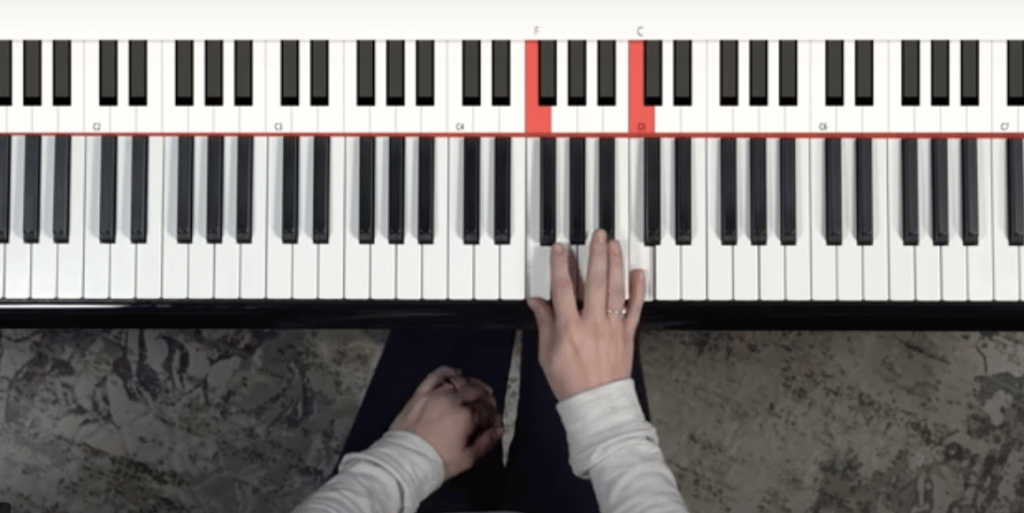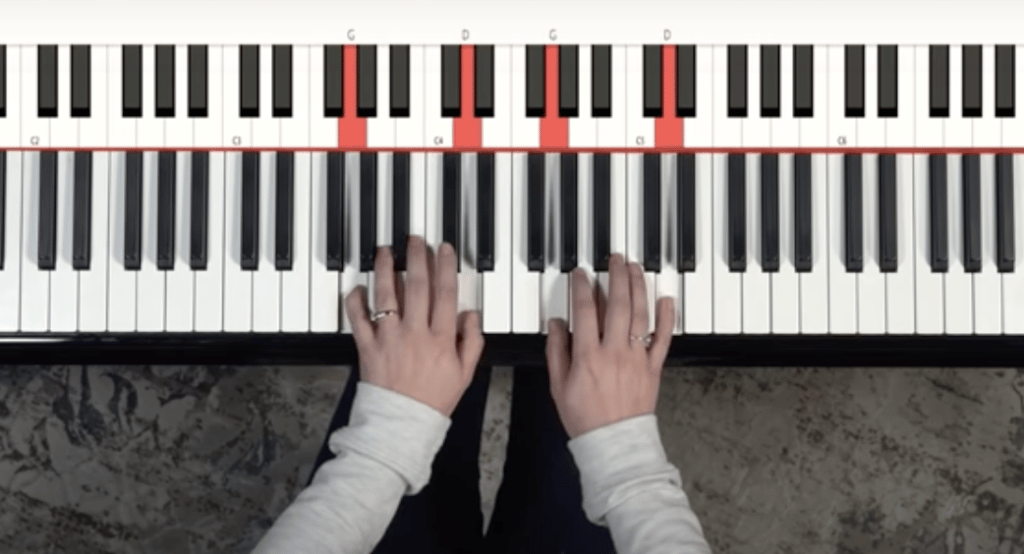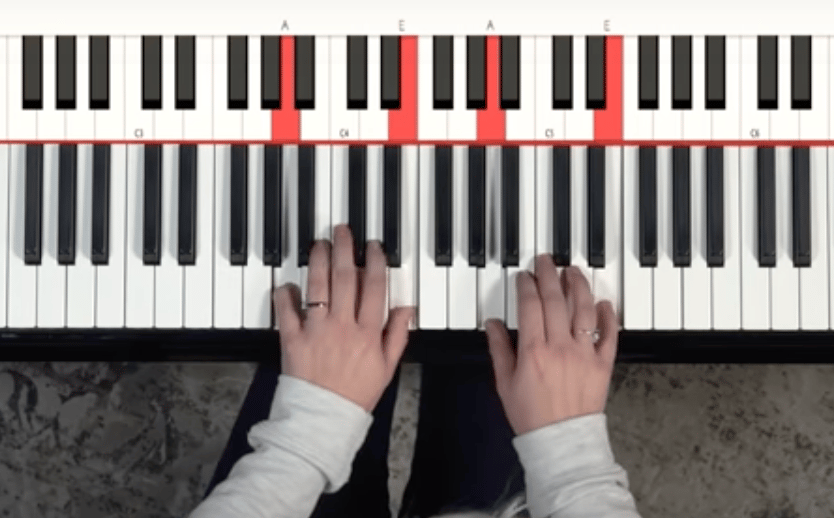Improvisation.
It can be a scary concept. Improvisation involves creating music as you go. You’re not playing something that someone else has written, you’re just — making it up.
That’s daunting! Especially for beginners.
If you don’t have a good understanding of the theoretical or technical skills required to play the piano, improvising can seem like a lofty goal.
But it doesn’t have to be.
This lesson is for all the beginners out there who don’t think improvisation is possible. Or you might have been playing for a little while, but don’t know how to actually practice improvisation.
This is for you.
But first, it’s important to know….
I think this is where a lot of people get stuck. Improvisation is NOT just playing anything at any time. You don’t just mash a bunch of keys and hope for the best.
The best improvisation uses a framework. Think of it like a blueprint — or building blocks that you start with and add your own flair to it.
For music, this is most often in the form of a key signature and chord progression (although there are always exceptions – thanks jazz!).
This framework is going to be 3 chords and 3 notes.
So let’s build your 3 chords. The chords you’ll use are F, G, and A minor — but the names aren’t important for what you’re doing today, so if you don’t know them, don’t worry.
Here’s how you build an F chord. Find the spot on the piano where there are 3 black keys grouped together. The white key immediately to the left of them is an F. And that is true for EVERY group of 3 black keys on the piano. The white key next to them is always an F, it’s just at different pitches.
Once you’ve found F, count up 5 white notes. That’s C. Those are the two notes you’ll be playing. They look like this:

That’s the F chord for today. Pay it with BOTH hands until you get comfortable.
Once you’re comfortable playing the F chord, move everything up one white key. That’s a G chord and it will look like this:

You can see you’re just one note higher with both hands. Easy right? Now do it one more time. Move up one more white note. That will be A minor.

And those are the only chords you’re going to be using today. Just 3 chords!
Practice playing those chords in order. F, G, and A minor. Play them over until you’re comfortable.
Keep playing the F chord with your left hand. But with your right hand, take any finger you like, and play the note in-between F and C. That note is an A.
As you play the chord progression in your left hand (F, G, A minor), you’ll just be walking that single note up in your right hand.
That is the beginning of our improvisation.
Repeat this pattern, and then try changing it up and experimenting with those 3 chords in the left hand, and those 3 notes in the right hand.
Change the order, change the timing, change anything you like. Don’t be afraid to make mistakes, because that’s how you will learn what sounds good and what doesn’t!
And that — is improvising.
This is just the start, but hopefully, it’s given you a good introduction and shown you that improvisation does NOT have to be scary.
Have fun!
Lisa Witt has been teaching piano for more than 20 years and in that time has helped hundreds of students learn to play the songs they love. Lisa received classical piano training through the Royal Conservatory of Music, but she has since embraced popular music and playing by ear in order to accompany herself and others. Learn more about Lisa.
/marketing/pianote/promos/april/banner-bg-m.webp)
We use cookies for traffic data and advertising. Cookie Policy »
/marketing/pianote/promos/april/banner-title.webp)